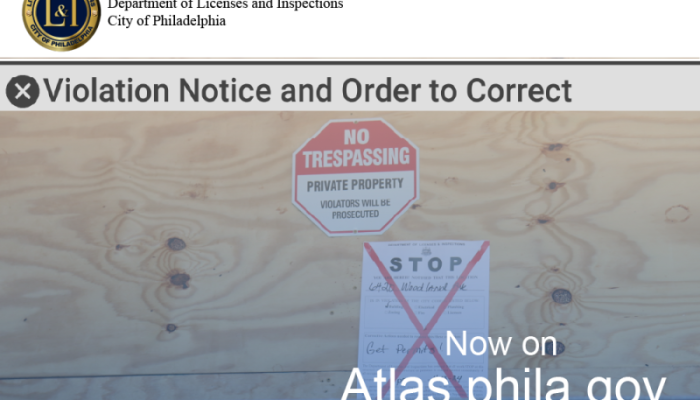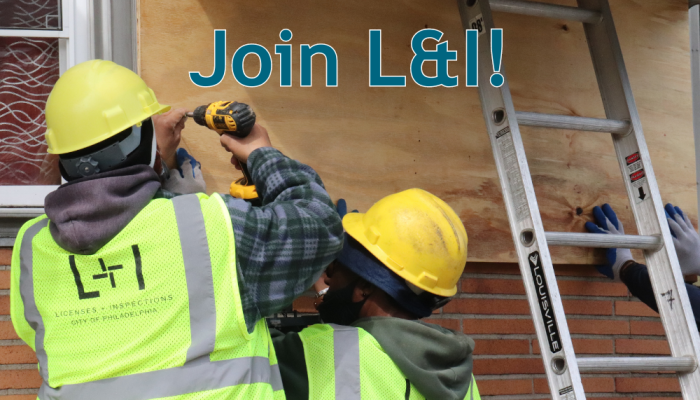Philadelphia is preparing to adopt the 2021 I-Codes, with state and local modifications, effective July 2025. Starting January 2026, all new permit applications must comply with the updated codes. To learn more, view the forms and documents.
What we do
The Department of Licenses and Inspections (L&I) helps people comply with building safety standards and other code requirements. Contractors, business and property owners, landlords, tenants, and other members of the public are all served by L&I.
As part of our mission, we:
- Inspect construction projects so they meet construction and fire codes.
- Inspect higher-risk properties for compliance with fire codes.
- Respond to complaints regarding many code violations.
- Inspect, monitor, seal, and demolish vacant and/or dangerous buildings.
- Review plans and issue permits according to building, zoning, plumbing, and electrical codes.
- Issue trade and business licenses.
- Help landlords and tenants understand their responsibilities.
Connect
| Address |
1401 John F. Kennedy Blvd.
11th Floor Philadelphia, PA 19102 |
|---|---|
|
If you’ve filed a construction complaint with 311, you can submit more information to: addinfoli |
|
|
Phone:
311
|
L&I monthly newsletter
Our newsletter keeps you up-to-date on permits, licenses, and more. Sign up to get new issues every month, or read archived issues online.




